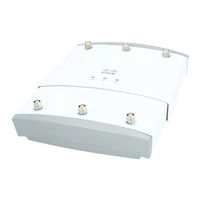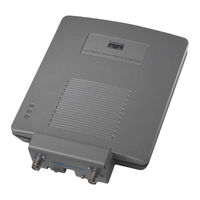Cisco Aironet 1200 Series Manuals
Manuals and User Guides for Cisco Aironet 1200 Series. We have 8 Cisco Aironet 1200 Series manuals available for free PDF download: Software Configuration Manual, Hardware Installation Manual, Configuration Manual, Upgrade Manual, Ordering Manual
Cisco Aironet 1200 Series Software Configuration Manual (284 pages)
Software Configuration Guide
Brand: Cisco
|
Category: Wireless Access Point
|
Size: 3.27 MB
Table of Contents
Advertisement
Cisco Aironet 1200 Series Software Configuration Manual (272 pages)
Brand: Cisco
|
Category: Wireless Access Point
|
Size: 4.17 MB
Table of Contents
Cisco Aironet 1200 Series Hardware Installation Manual (138 pages)
Aironet 1200 Series Access Point
Brand: Cisco
|
Category: Wireless Access Point
|
Size: 3.71 MB
Table of Contents
Advertisement
Cisco Aironet 1200 Series Hardware Installation Manual (128 pages)
Hardware Installation Guide
Brand: Cisco
|
Category: Wireless Access Point
|
Size: 2.47 MB
Table of Contents
Cisco Aironet 1200 Series Hardware Installation Manual (110 pages)
OL-2155-02
Brand: Cisco
|
Category: Wireless Access Point
|
Size: 1.83 MB
Table of Contents
Cisco Aironet 1200 Series Configuration Manual (40 pages)
WLC (Wireless LAN Controller), WiSM (Wireless Services Module) Integrated WLC with APs
Brand: Cisco
|
Category: Network Hardware
|
Size: 2.33 MB
Table of Contents
Cisco Aironet 1200 Series Upgrade Manual (36 pages)
Brand: Cisco
|
Category: Wireless Access Point
|
Size: 0.37 MB
Table of Contents
Cisco Aironet 1200 Series Ordering Manual (6 pages)
Ordering Guide
Brand: Cisco
|
Category: Wireless Access Point
|
Size: 0.11 MB
Advertisement
Related Products
- Cisco 1231G - Aironet - Wireless Access Point
- Cisco 1242G - Aironet - Wireless Access Point
- Cisco 1252G - Aironet - Wireless Access Point
- Cisco 1232AG - Aironet - Wireless Access Point
- Cisco 1242AG - Aironet - Wireless Access Point
- Cisco Aironet 1260 Series
- Cisco Aironet 1250 Series
- Cisco Aironet 1240AG Series
- Cisco aironet 1242
- Cisco Aironet 1850 Series







